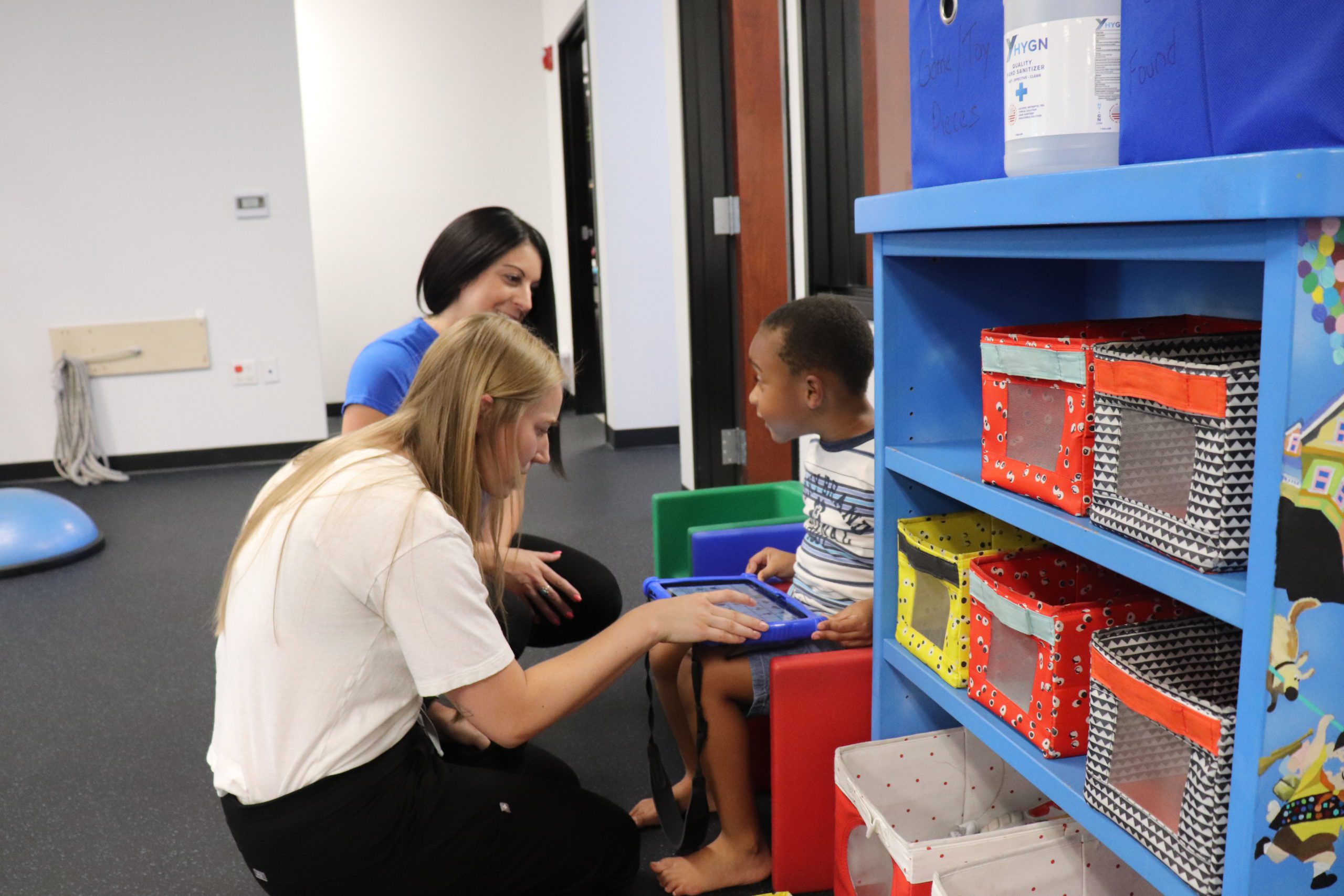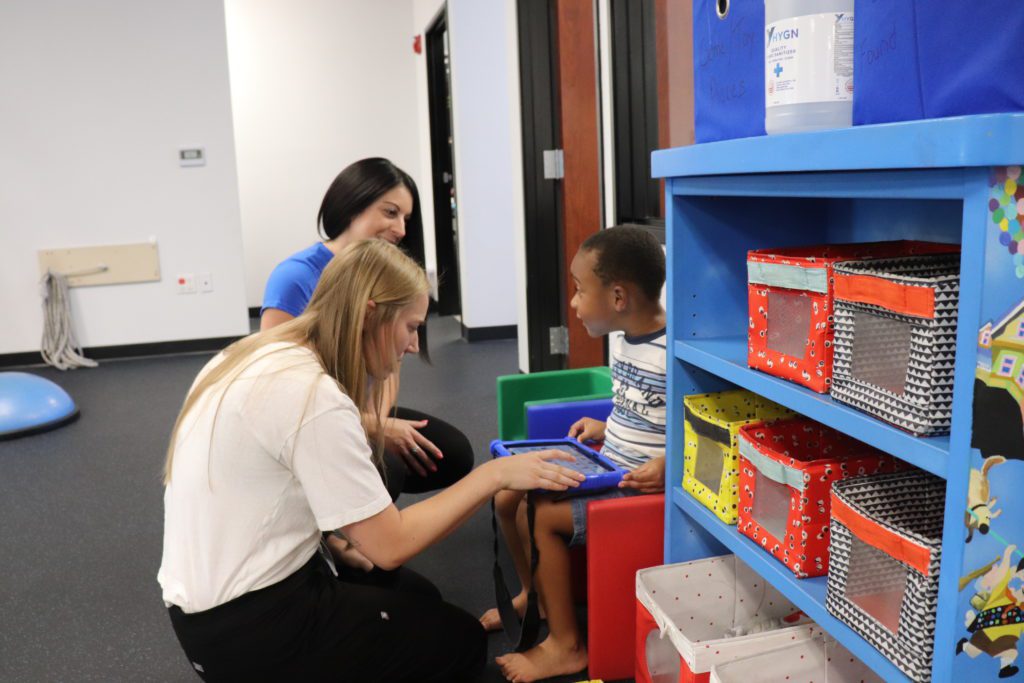Debunking Augmentative and Alternative Communication (AAC) Myths
by Lauryn Bates, CCC-SLP
Kids Place Central Pediatric Speech Therapist
The average person speaks approximately 150 words per minute. In a typical day, most of us will express more than 15,000 words for a variety of communicative intents. We use language to maintain social relationships with others as well to have our wants/needs met. We exchange thoughts and information with others in conversation and gain knowledge about the world around us. However, there is an estimated 4 million people in the United States who are not able to effectively communicate with those around them using natural speech.
Your child’s speech-language pathologist might discuss the use of augmentative and alternative communication (AAC) to compensate for severely impaired expressive communication abilities. AAC is the term used to refer to other forms of communication that can be used to support a child’s attempts at communicating his wants/needs with others. These alternative methods are either unaided or aided methods of communication. Unaided methods include use of facial expressions, gestures, or sign language. Aided forms of communication can include use of actual items (i.e., child hands you a cup to let you know that he wants a drink), pointing to symbols/pictures on a communication board (i.e., child points to a picture of milk on a communication board/book), or activation of a device (i.e., child selects cell on his device with the picture of milk which activates auditory output that says, “I want milk.”).
The world of AAC can seem daunting and counterintuitive. After all, why would you want your child to use a device to communicate when your goal is to have your child use his own natural speech to effectively communicate wants/needs? Augmentative communication and early intervention: Myths and realities, an article written by Romski and Sevick (2005), explores the myths and realities surrounding the use of AAC in early intervention.
Myth 1: AAC is a “last resort” in intervention. AAC actually plays critical roles in the early development of communication. AAC systems facilitate communication development because it provides an output mode of communication for the child with severe communication disabilities. This allows the child other options (e.g., use of pictures, signs, or activation of a speech-generating device) to engage in conversations with peers/adults when natural speech is not a viable option at that current moment in time.
Myth 2: Use of AAC can adversely impact or halt further development of a child’s speech. Clinical studies have shown that children demonstrated improvements in their speech development once AAC was implemented. Children hear the auditory output of their communicative intents each time they use their device. Furthermore, children attempt to verbalize more knowing that they can use their device for clarification or to repair communication breakdowns.
Myth 3: Children need to have a specific set of skills in order to benefit from AAC. It was initially thought that children needed to achieve a certain level of cognitive functioning to be considered a candidate for a device. Severely delayed language abilities correlate with significantly delayed cognitive abilities. Language is a crucial component for gaining knowledge and understanding the world around the child; therefore, if we want to strengthen cognitive skills, we need to ensure that we are supporting (and actively encouraging) the development of the child’s language skills.
It is never too early to implement use of AAC into your child’s speech and language intervention. AAC strategies and devices are tools that can be utilized to assist with the strengthening and development of severely impaired expressive communication skills. Please talk to your Kids Place Speech and Language therapist for more information.
References:
Romski, M., & Sevcik, R. A. (2005). Augmentative communication and early intervention:
Myths and realities. Infants & Young Children, 18(3), 174-185.








